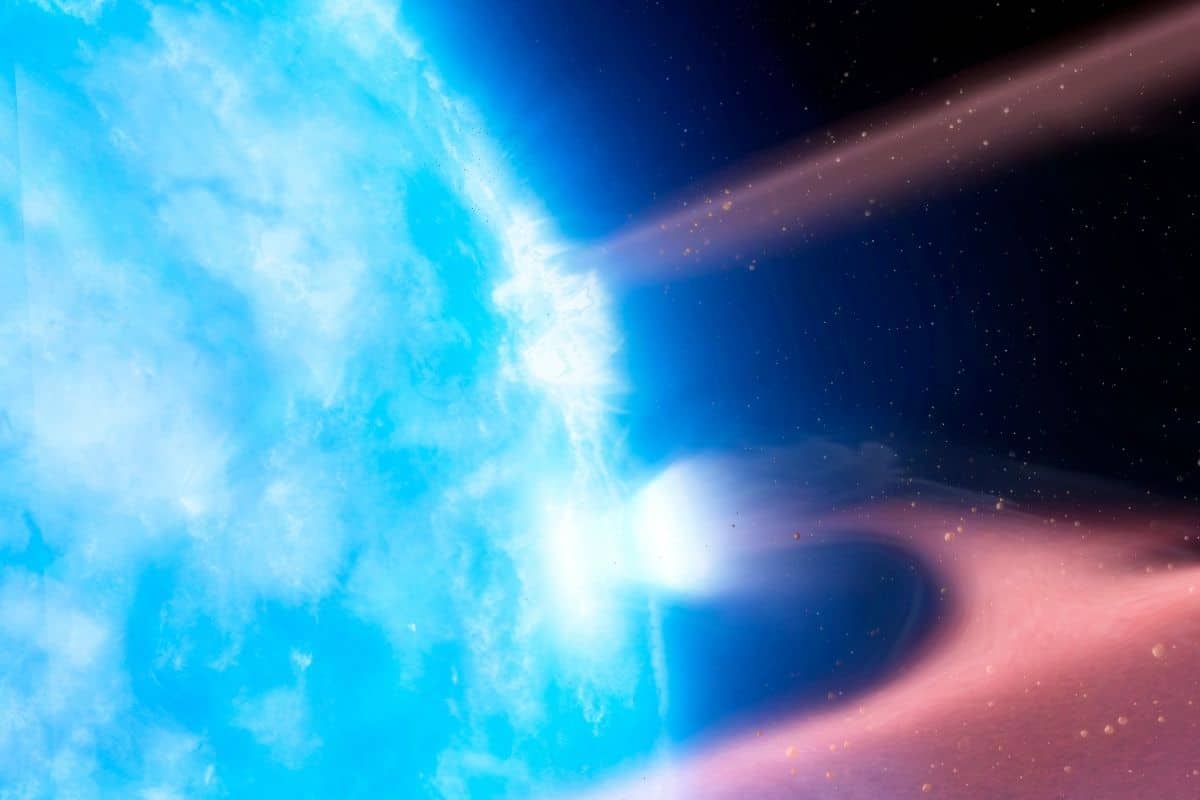

It was suspected that the remains of planets would be swallowed by white dwarfs. But now we know for sure.
The fate of most stars, including our sun, is to turn into a white dwarf one day. There are currently about 300,000 white dwarf stars in our Milky Way. Astronomers suspect that these ‘dead stars’ draw in and swallow up the debris of their planets and other material. However, no one had witnessed it yet. Until now.
As a star ages, the hydrogen fusion in the star’s core stops and it swells. Then a red giant is created. When the star then blows away its outer layers of gas and dust, the core contracts, leaving a white dwarf. The star has come to the end of its life. Such a white dwarf is about the same size as Earth, but has a much greater density (a teaspoon of white dwarf matter weighs about as much as an elephant on Earth!). The dying process also has a major influence on the planets that orbit such a star. Most planets will be drawn towards the star and swallowed. Our sun will also end up as a compact white dwarf in five billion years. In fact, about 97 percent of all stars turn into white dwarfs.
It’s a breakthrough. For decades, astronomers have been analyzing the elements on the surface of white dwarfs to determine their composition.
Dirty White Dwarfs
These studies have shown that many white dwarfs in the Milky Way galaxy are ‘polluted’ with foreign material. Think of heavy elements, such as iron, calcium and magnesium. This material is thought to come from, for example, planets, asteroids or other rocky celestial bodies that once orbited that star. But until now, astronomers had never seen that material drawn toward the star.
X-rays
In the new study, the researchers used the Chandra X-ray Observatory — normally used to detect X-rays from black holes and neutron stars — to analyze nearby white dwarf G29-38. If material from celestial bodies is drawn towards the star at a sufficiently high speed, it collides with the surface of the star and forms the plasma. This red-hot plasma then settles on the surface. When it cools afterwards, it emits X-rays that can be detected with powerful telescopes.
Confirmed
Detecting these X-rays is not so easy, however. The small amount that reaches Earth can easily be lost among other bright X-ray sources in the sky. But with Chandra’s help, the researchers were able to isolate the white dwarf star G29-38 and view only the X-rays of this isolated white dwarf. Then they watched as debris from destroyed planets hit the surface of the white dwarf star. The study thus confirms what astronomers have thought for decades: white dwarf stars do indeed eat the debris of their planets.
Scoop
It’s a first. “We’ve finally seen material enter a star’s atmosphere,” said study researcher Tim Cunningham. “This detection provides the first direct evidence that white dwarfs are engulfing the remains of ancient planetary systems.”
The study leaves you wanting more. “Thanks to our new technique, we can study multiple systems,” says Cunningham. “And that way we can glimpse the likely fate of both the thousands of known exoplanetary systems and our own solar system.”
Source material:
†Final moments of planetary remnants seen for first time– University of Warwick (via EurekAlert)
Image at the top of this article: University of Warwick/Mark Garlick